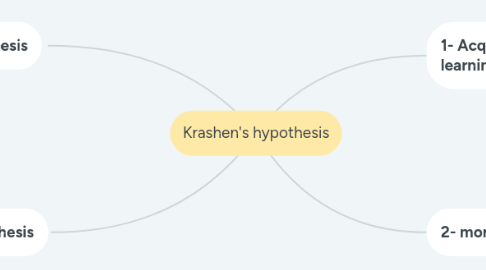Krashen's hypothesis
Nsreen Shehriにより

1. 3-natural order hypothesis
1.1. Was based on the finding that, as in first language acquisition, second language acquisition unfolds in predictable sequences. The language features that are easiest to state (and thus to learn) are not necessarily the first to be acquired. For example, the rule for adding an -s to third person singular verbs
2. 4- input hypothesis
2.1. Is that acquisition occurs when one is exposed to language that is comprehensible and that contains i + 1. The 'i' represents rhe level of language already acquired, and the '+I' is a metaphor for language
3. 1- Acquisition - learning hypothesis
3.1. We 'acquire' as we are exposed to samples of the second language we understand in much the same way that children pick up their first language-with no conscious attention to language form. We 'learn' on the other hand through conscious attention to form and rule learning.
4. 2- monitor hypothesis
4.1. The acquired system initiates a speaker's utterances and is responsible for spontaneous language use. The learned system acts as an editor or 'monitor', making minor changes and polishing what the acquired system has produced. Such monitoring takes place only when the speaker/writer has plenty of time.


